Archaeology
-
 Humans
HumansAnglo-Saxons left language, but maybe not genes to modern Britons
Modern Britons may be more closely related to Britain’s indigenous people than they are to the Anglo-Saxons, a new genetic analysis finds.
-
 Anthropology
AnthropologyAncient Greek shipwreck found to be world’s largest
Special diving suits enable discovery that much of a nearly 2,100-year-old Greek vessel and its cargo survive.
By Bruce Bower -
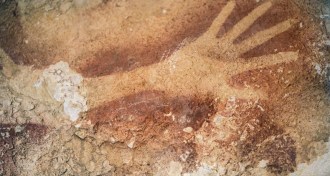 Archaeology
ArchaeologyIndonesian stencils rival age of Europe’s early cave art
Hand prints outlined in pigment were made in Southeast Asia at least 39,900 years ago, making the paintings about the same age as European cave art.
By Bruce Bower -
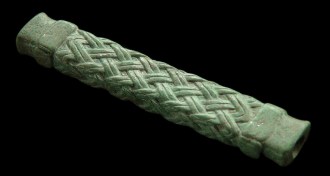 Anthropology
AnthropologyMysterious foreigner may have ruled ancient Maya kingdom
Bone chemistry suggests one of the early rulers of the Maya kingdom Copan and his retainers had foreign credentials.
By Bruce Bower -
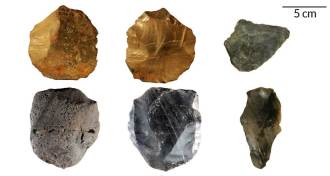 Archaeology
ArchaeologyAncient stone-tool making method arose multiple times
Hominids in both Africa and Eurasia independently invented a flake-tool technique hundreds of thousands of years ago, countering a long-held idea in archaeology.
By Meghan Rosen -
 Science & Society
Science & SocietySyria’s World Heritage Sites severely damaged by war
Satellite images reveal that five of the country’s six World Heritage Sites have suffered damage and some structures have been completely destroyed.
By Beth Mole -
 Archaeology
ArchaeologyPyramid builders could have used rolling blocks
Instead of sliding blocks on a ramp, ancient Egyptians could have rolled the massive bricks to the pyramids, a physicist suggests.
By Meghan Rosen -
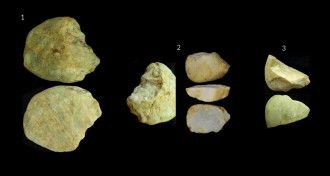 Archaeology
ArchaeologyMore signs emerge of New World settlers before 20,000 years ago
Controversial stone tools of pre-Clovis humans have been excavated in South America.
By Bruce Bower -
 Genetics
GeneticsLong before Columbus, seals brought tuberculosis to South America
Evidence from the skeletons of ancient Peruvians shows that seals may have brought tuberculosis across an ocean from Africa.
-
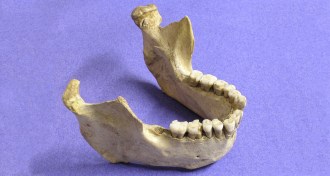 Anthropology
AnthropologyEarlier dates for Neandertal extinction cause a fuss
Revised dates suggest Neandertals coexisted with modern humans for several thousand years in Europe before disappearing 40,000 years ago.
By Bruce Bower -
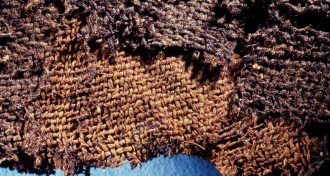 Anthropology
AnthropologyOrigins of Egyptian mummy making may predate pyramids
Preservative mixture for mummy wrapping found on linens that covered the dead as early as 6,300 years ago.
By Bruce Bower -
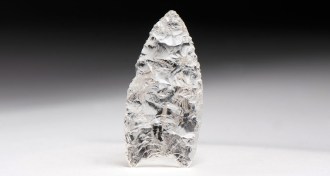 Anthropology
AnthropologyClovis people may have hunted elephant-like prey, not just mammoths
The ancient American Clovis culture started out hunting elephant-like animals well south of New World entry points, finds in Mexico suggest.
By Bruce Bower